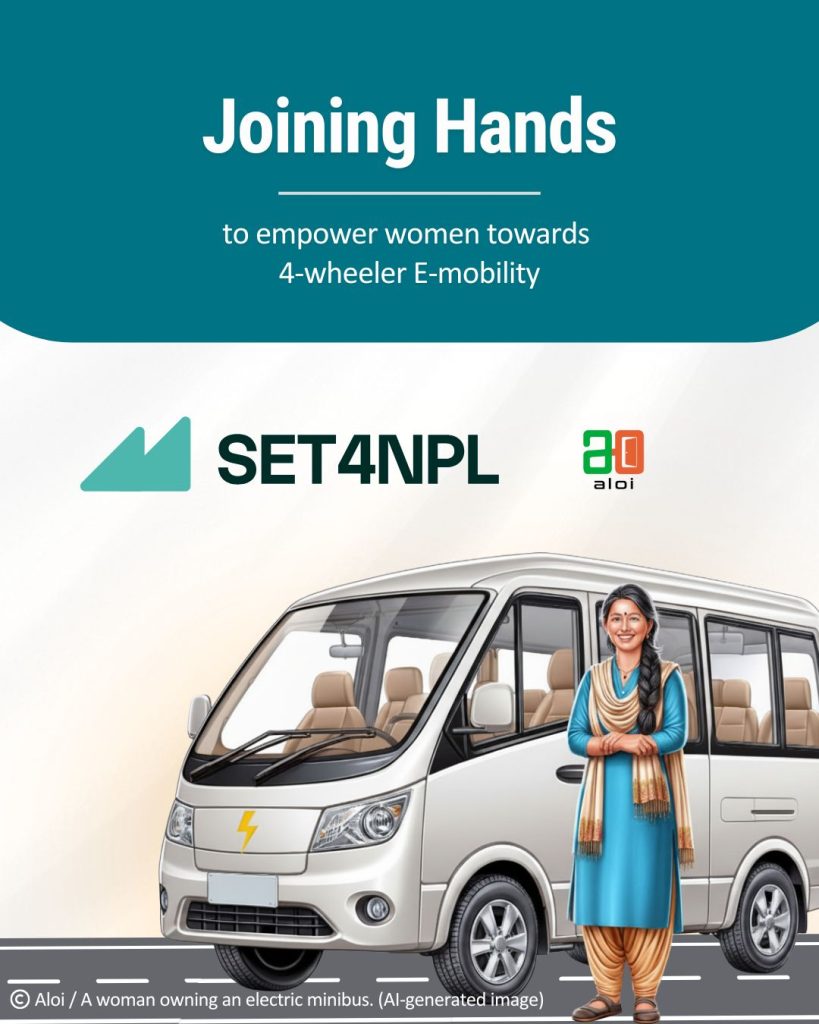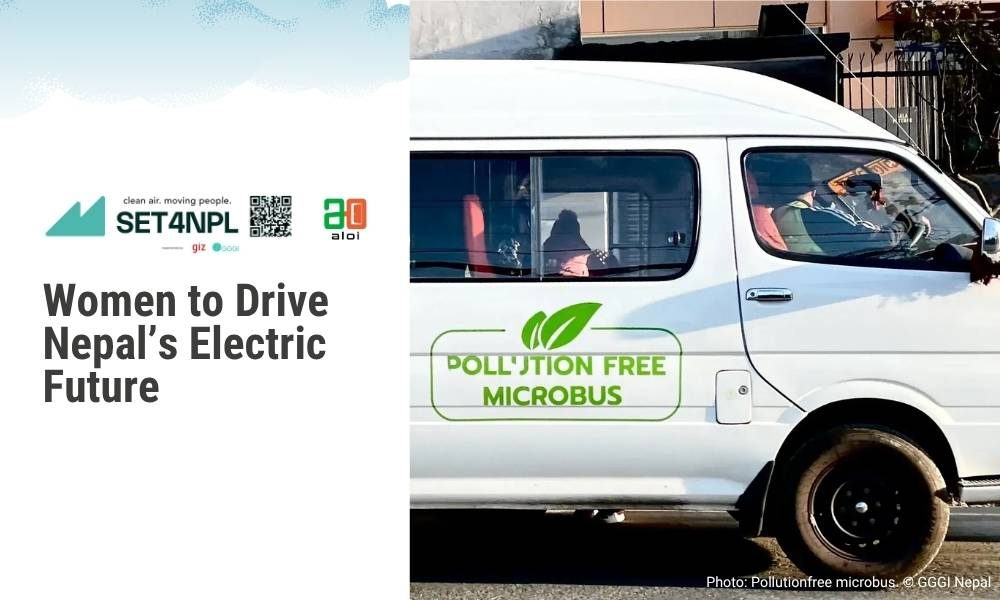Steering Change: Empowering Women to Drive Nepal’s Electric Future
Parbati Shrestha, 38, once spent her days managing household chores until she decided to take the wheel. With Aloi’s support, she became a Safa Tempo (three-wheeler) driver, proving that women can chart their own financial independence on Nepal’s roads.
Now, with experience and confidence by her side, Parbati is ready for her next chapter upgrading from a three-wheeler to a four-wheeler EV. Her journey mirrors the growing opportunities in Nepal’s green mobility sector, strengthened by projects such as SET4NPL| Driving Sustainable Transportation with EV in Nepal to help more women like Parbati drive toward a cleaner, more inclusive future.
Empowering Women, Powering Green Mobility

Aloi Private Limited, established in 2019, is a fintech company bridging finance and sustainability. Through its digital lending solutions and it’s product: Bijulipower, Aloi has helped hundreds of micro-entrepreneurs access finance for green mobility and agriculture.
SET4NPL is supported by the Mitigation Action Facility on behalf of the German Federal Ministry for Economic Affairs and Energy (BMWE), the UK Department for Energy Security and Net Zero, the Danish Ministry of Climate, Energy and Utilities (KEFM), the European Union, and the Children’s Investment Fund Foundation (CIFF).
Now, through a partnership with SET4NPL, Aloi is taking its mission a step further empowering women in the public transport sector of Kathmandu Valley by equipping them with the skills, licenses, and financial pathways needed to enter Nepal’s growing electric vehicle (EV) industry.
The SET4NPL Women Driver Training Program
This project, implemented by Aloi with SET4NPL’s support, focuses on assisting women who are eager to become electric microbus (EMB) drivers or owners.
The goal is simple but transformative to increase women’s participation and leadership in Nepal’s green transport sector.
Through this program participants receive:
Comprehensive EV Driving Training
- B-category (car/microbus) license training
- Theoretical and practical sessions
- On-road and lab-based driving practice
- Introduction to electric vehicles and basic maintenance skills
Empowerment and Capacity Building
- Confidence-building and leadership development sessions
- Road safety, public behavior, and communication skills
License and Employment Support
- Step-by-step assistance throughout the licensing process
- Job linkages with EV companies, transport committees, or cooperatives
- Guidance for self-employment and entrepreneurship
Priority is given to financially vulnerable women who are committed to attending the full training and are eager to build a livelihood through EV driving.
A Journey Toward Independence
For many participants, this program represents more than just learning a technical skill it’s a doorway to opportunity.
The Bigger Picture
Nepal’s transport system has long been a male-dominated professional, but the electric revolution offers a chance to rewrite that story. By combining green technology with inclusive finance and training, the the partnership between Aloi and SET4NPL is creating a future where women are at the forefront of clean mobility.
Every trained driver is not just a driver but also a role model, a provider, and a pioneer in Nepal’s sustainable development journey.
When women drive electric, Nepal doesn’t just move, it moves forward.
About Aloi
Aloi Private Limited is a fintech company empowering micro-entrepreneurs across Nepal through green finance and digital innovation.
Aloi provides transparent, efficient, and inclusive financing for electric vehicles and sustainable agriculture.
📍 Kuleshwor, Kathmandu
✉️ hello@aloi.global












